How to Tell If THCA Flower Is High Quality By Color and Appearance
When shopping for THCA flower, your eyes are your first and most powerful quality assessment tool. Before you consider lab results, pricing, or brand reputation, a thorough visual inspection can reveal whether you're looking at premium hemp flower characteristics or subpar product that won't deliver the experience you're seeking.
Understanding how to tell if THCA flower is good quality through visual examination is a skill that develops over time, but the fundamentals are straightforward and accessible to both beginners and experienced consumers. Color plays a crucial role in this assessment, but it's just one component of a comprehensive quality evaluation that includes trichome density, pistil condition, bud structure, and the absence of defects.
The challenge many consumers face is distinguishing between genuinely high-quality THCA flower and product that simply looks acceptable at first glance. Marketing photos can be misleading, and without knowing what specific visual indicators to look for, it's easy to end up with flower that doesn't meet your standards. Poor quality THCA flower can result in harsh smoke, diminished effects, and wasted money—problems that are entirely avoidable with proper visual assessment skills.
This comprehensive guide will teach you exactly what does good THCA flower look like, providing a detailed checklist of visual quality indicators that you can use whether you're examining product in person or evaluating photos online. You'll learn how to spot the telltale signs of exceptional flower, recognize red flags that indicate problems, and develop the confidence to make informed purchasing decisions based on appearance alone. By the end of this guide, you'll have the knowledge to consistently identify and select the highest quality THCA flower available.
The Complete Visual Quality Checklist
Identifying quality hemp flower becomes systematic when you follow a consistent evaluation process. Professional buyers and experienced consumers rely on a comprehensive checklist that examines multiple visual factors simultaneously, creating a complete picture of flower quality.
Color Vibrancy and Richness: High-quality THCA flower displays rich, vibrant colors that immediately catch the eye. Whether predominantly green, purple, or a mixture of hues, the colors should appear deep and saturated rather than dull or faded. This vibrancy indicates proper cultivation, appropriate nutrient levels, and careful post-harvest handling that preserves the flower's natural pigmentation.
Trichome Coverage and Visibility: Premium flower should appear "frosty" with visible trichome coverage that gives the buds a crystalline, sparkling appearance even without magnification. These resinous glands should be abundant enough to be clearly visible on the surface of the flower, creating a white or silvery sheen that distinguishes exceptional buds from mediocre ones.
Pistil Condition and Color: The hair-like pistils (often called hairs) should be intact, vibrantly colored in shades of orange, red, or rust, and well-distributed across the bud surface. Typically, 70-90% of pistils should display these mature colors, with some lighter pistils remaining. Damaged, missing, or excessively brown pistils suggest handling problems or age-related degradation.
Bud Structure and Density: Quality THCA flower exhibits appropriate density for its strain—firm enough to indicate proper development but not unnaturally compact or rock-hard. The bud structure should appear natural and well-formed, with visible calyx development and minimal stem material. The flower should maintain its shape without appearing compressed or manipulated.
Absence of Defects: Premium flower is free from visible mold, mildew, seeds, excessive stem material, discoloration, pest damage, or chemical residues. Any of these issues immediately disqualifies product from the high-quality category, regardless of other positive attributes.
Overall "Bag Appeal": This industry term describes the flower's immediate visual impact—the combination of all quality factors creating an attractive, professional appearance that commands attention. High bag appeal results from excellent cultivation and handling throughout the entire production process.
Quick Reference Guide: When conducting rapid assessments, focus first on color vibrancy, trichome frosting, and the absence of obvious defects. These three factors provide the fastest indication of overall quality and can eliminate poor options immediately, allowing you to focus detailed inspection on the most promising candidates.
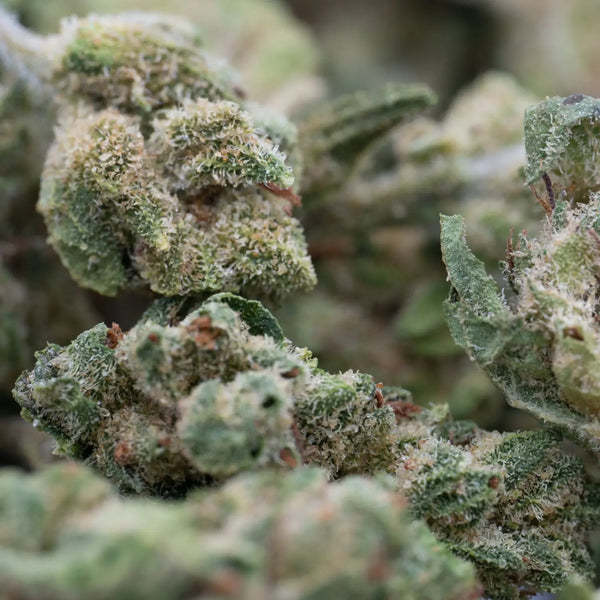
Color Quality Indicators
Understanding THCA flower quality indicators related to color requires knowledge of what constitutes natural, healthy coloration versus warning signs of problems. Color assessment is nuanced, as different strains naturally display various color profiles, but certain principles apply universally across all varieties.
Vibrant vs Dull Coloration: The most immediate color indicator is vibrancy. High-quality THCA flower displays colors that appear alive and rich—deep forest greens, brilliant purples, vivid oranges in the pistils. These vibrant colors indicate proper chlorophyll retention, appropriate anthocyanin development (for purple strains), and careful curing that preserves natural pigments. Conversely, dull, faded, or washed-out colors suggest age, improper storage, light exposure, or poor cultivation practices that degraded the flower's quality.
Natural Color Ranges: Healthy THCA flower typically displays shades of green ranging from light lime to deep forest green, often with undertones of blue or gray. Purple varieties show genuine purple coloration in the leaves and calyxes, not just the pistils. Orange, red, and rust-colored pistils provide natural accent colors. These color combinations create visually striking buds that indicate proper genetic expression and cultivation conditions.
Rich, Deep Tones Indicating Proper Development: The depth of coloration reflects cultivation quality. Deep, rich greens indicate healthy chlorophyll levels and proper nutrient uptake during growth. Genuine purple coloration (when present) should appear deep and saturated, resulting from anthocyanin development triggered by appropriate temperature fluctuations during late flowering. Pale or washed-out versions of these colors suggest suboptimal growing conditions or premature harvest.
Warning Colors: Certain colors immediately signal quality problems. Gray or grayish-white patches often indicate mold or mildew growth. Excessive brown coloration beyond normal pistil color suggests oxidation, age, or moisture issues. Yellow patches or overall yellowing indicates nutrient deficiencies during growth or degradation during storage. White or bleached areas on bud tips suggest light burn from excessive light intensity during cultivation. Any of these warning colors should prompt immediate rejection or very careful further inspection.
How Lighting Affects Color Perception: Color assessment requires attention to lighting conditions. Different light sources dramatically alter color perception—fluorescent lighting can make flower appear more blue or green, while incandescent lighting adds warm, orange tones that mask true colors. LED lighting varies widely in color temperature and can either enhance or obscure true coloration. Always examine flower under multiple lighting conditions when possible.
Examining Under Natural Light vs Artificial: Natural daylight provides the most accurate color assessment. When possible, examine THCA flower near a window with indirect natural light, which reveals true colors without the distortion of artificial lighting. If natural light isn't available, use full-spectrum LED lighting that approximates daylight conditions. Avoid making quality decisions based solely on photos taken under grow lights or colored LED displays commonly used in dispensaries.
Color Consistency Across the Batch: High quality THCA flower appearance includes color consistency within a batch. While some natural variation is expected, extreme inconsistency in color from bud to bud suggests mixed batches, inconsistent cultivation conditions, or quality control issues. Premium producers maintain tight quality standards that result in uniform appearance across the entire batch.
Fade and Discoloration as Red Flags: Color fade is one of the clearest indicators of age or improper storage. THCA flower that has lost its vibrancy, showing faded greens or browns where bright colors should appear, has degraded from its peak quality. This fading often accompanies aroma loss and potency degradation, making it a reliable warning sign to avoid aged or improperly stored product.

Trichome Assessment
Trichomes are perhaps the most critical visual indicator of THCA flower quality, as these microscopic resin glands contain the vast majority of cannabinoids and terpenes that determine potency and effects. Learning to assess trichome quality is essential for identifying quality hemp flower and distinguishing exceptional product from average offerings.
What Trichomes Look Like to the Naked Eye: To the unaided eye, trichomes appear as a crystalline, sparkling coating on the flower surface. High-quality THCA flower displays obvious trichome coverage that creates a frosted or sugar-dusted appearance, visible even from a normal viewing distance. These resin glands catch and reflect light, creating the characteristic sparkle that indicates abundant trichome production. The flower surface should appear fuzzy or crystalline rather than smooth and dull.
"Frosty" vs Sparse Coverage: The term "frosty" describes flower with exceptional trichome density—so abundant that the underlying flower color is partially obscured by the white or translucent trichome layer. This frosting should extend across the entire bud surface, including the areas between calyxes and even onto sugar leaves. Sparse trichome coverage, where you can easily see the plant material beneath with minimal crystalline coating, indicates lower cannabinoid content and reduced quality. Premium THCA flower should appear noticeably more frosted than average product.
Using Magnification for Detailed Inspection: While impressive trichome coverage is visible to the naked eye, detailed quality assessment requires magnification. A jeweler's loupe (10x-30x magnification) or a digital microscope reveals trichome structure, development stage, and integrity. This magnified inspection shows whether trichomes are intact with full, bulbous heads or have been damaged during handling, revealing far more about quality than surface-level observation alone.
Trichome Color: Clear vs Cloudy vs Amber: Under magnification, trichome color reveals harvest timing and current state. Clear, glassy trichomes indicate early harvest before peak cannabinoid development. Cloudy or milky white trichomes signal peak maturity and optimal harvest timing—this is what you want to see in premium hemp flower characteristics. Amber or golden trichomes indicate late harvest or age-related degradation, suggesting that THCA has begun converting to CBN. The ideal profile shows predominantly cloudy trichomes with small percentages of clear and amber, indicating harvest at peak ripeness.
Intact vs Damaged Trichome Heads: Trichome integrity reveals handling quality throughout the supply chain. Intact trichomes have full, round, mushroom-shaped heads on visible stalks. Damaged trichomes appear as broken stalks without heads, or heads that have been crushed or smeared. Rough handling, excessive processing, or age causes this damage, reducing potency and aroma. High-quality THCA flower maintains trichome integrity with minimal damage, even after packaging and shipping.
Density as Quality Indicator: Trichome density directly correlates with cannabinoid content and overall quality. Premium THCA flower displays trichomes densely packed across all flower surfaces—not just the most visible areas but also in crevices and on lower portions of buds. This comprehensive coverage indicates optimal growing conditions, proper genetics, and careful cultivation that maximized resin production. Flower with inconsistent trichome density, showing frosting only on outer surfaces while inner areas appear bare, suggests quality issues or aggressive handling that knocked off trichomes.
Photography Showing Quality vs Poor Trichome Coverage: When evaluating product online, examine macro photography carefully. Quality product photos should clearly show trichome coverage even in standard product shots, with close-up photos revealing the dense, crystalline coating. Be wary of photos that appear overly filtered, too bright, or lack detail—these may hide poor trichome coverage. Legitimate sellers of best THCA buds visual guide material provide clear, detailed photos that showcase rather than hide trichome quality.
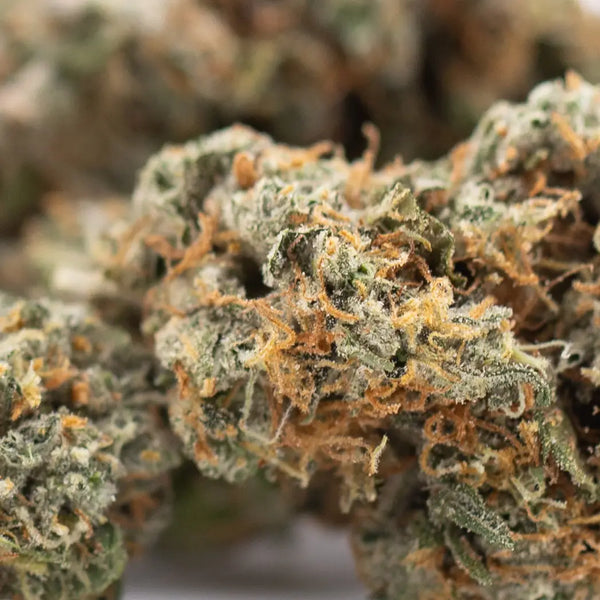
Pistil Examination
Pistils, the hair-like structures emerging from female cannabis flowers, provide important quality information that complements trichome and color assessment. Understanding pistil characteristics helps you spot bad THCA flower and recognize signs of proper cultivation and harvest timing.
Healthy Pistil Color: Quality THCA flower displays pistils in vibrant shades of orange, red, rust, or amber. These colors develop as pistils mature during flowering, changing from white or cream-colored in early development to these characteristic warm tones at maturity. The vibrancy of these colors indicates proper development and recent harvest—fresh, high-quality flower maintains vivid pistil coloration, while faded or dull colors suggest age or degradation.
Proper Distribution Across Bud: Pistils should be evenly distributed across the bud surface, emerging from calyxes throughout the flower structure. This even distribution indicates consistent pollination prevention and uniform development. Patches where pistils are missing or areas with excessive pistil clustering suggest irregular development or physical damage that may indicate quality issues.
Intact vs Degraded Pistils: Healthy pistils maintain their structure, remaining attached to the flower and displaying their characteristic curled, hair-like appearance. Degraded pistils appear brittle, broken, missing, or excessively crispy, often the result of over-drying, age, or rough handling. While some pistil damage during normal handling is inevitable, excessive damage suggests problems in cultivation, harvest, or post-harvest handling that likely affected overall quality.
Percentage of Colored Pistils (70-90% Ideal): The ratio of colored to white pistils indicates harvest timing. Ideal harvest occurs when 70-90% of pistils have turned from white to their mature colors, with 10-30% remaining white or cream-colored. This ratio indicates harvest at peak maturity when cannabinoid content is optimal. Flower with nearly 100% colored pistils may indicate late harvest or age, while predominantly white pistils suggest premature harvest before full cannabinoid development.
Warning Signs: Excessive Browning or Missing Pistils: Dark brown or black pistils, beyond the normal rust or amber colors, indicate potential mold issues, over-drying, or significant age. Similarly, large areas with missing pistils—where you can see the attachment points but the pistils themselves are gone—suggest either physical damage from aggressive handling or possible mold issues that caused pistil degradation. These warning signs warrant careful inspection for other quality problems before purchase.
Structure and Density Assessment
The physical structure and density of THCA flower reveals important information about cultivation methods, genetics, and handling. Understanding what does good THCA flower look like requires evaluating these structural characteristics that separate naturally developed, high-quality buds from problematic product.
Proper Bud Density: Quality THCA flower exhibits density appropriate to its genetic background—firm enough to indicate proper development and curing, but not unnaturally compact or rock-hard. When gently squeezed, premium flower should have slight give, then spring back to its original shape. This firmness indicates proper moisture content and natural development. Excessively hard, dense buds that feel like rocks raise concerns about plant growth regulator (PGR) use, while overly airy, fluffy buds suggest suboptimal growing conditions or premature harvest.
Natural Structure vs Compressed/Manipulated: High-quality buds maintain their natural, organic shape with visible individual calyxes creating the characteristic "bud" structure. The flower should appear to have grown naturally rather than being pressed or manipulated into shape. Compressed or flattened buds indicate vacuum sealing without proper protective packaging, rough handling, or intentional compression to manipulate appearance. Natural structure showcases the strain's genetic expression and indicates careful handling throughout production.
Visible Calyx Development: Premium THCA flower displays well-developed calyxes—the individual pods that make up the bud structure. These should be swollen and prominent, creating the characteristic rounded, layered appearance of quality flower. Well-developed calyxes indicate proper flowering time, adequate nutrients, and good genetics. Poorly developed calyxes appear small and flat, creating buds that lack structure and typically contain less cannabinoid content.
Trim Quality and Sugar Leaf Presence: The quality of manicuring reveals attention to detail and product value. Premium flower features careful trimming that removes excess leaf material while preserving trichome-covered sugar leaves close to the bud. Excessive leaf material (especially fan leaves) indicates poor trimming and reduced value. Conversely, over-manicured flower with all sugar leaves removed may have been trimmed too aggressively, potentially damaging trichomes. The ideal balance shows neatly trimmed buds with trichome-rich sugar leaves intact.
Stem to Flower Ratio: Quality THCA flower maximizes actual flower content while minimizing stem material. Stems should be proportionally small relative to the bud size—thin enough to snap cleanly when dry but substantial enough to support the flower structure. Large, thick stems relative to bud size reduce value and indicate poor trimming or selection. Examining the stem-to-flower ratio helps assess whether you're getting good value and actual consumable material.
Signs of PGR Use: Plant growth regulators (PGRs) create unnaturally dense, rock-hard buds with specific warning signs. PGR-affected flower appears abnormally compact with little to no visible trichome coverage, few or no visible pistils, and uniform density throughout. The buds feel unnaturally hard and heavy for their size, with interior density matching exterior—natural flower typically has slightly less dense interior structure. PGR use raises health concerns and indicates cultivation practices focused on weight over quality. These characteristics immediately disqualify flower from the premium category.

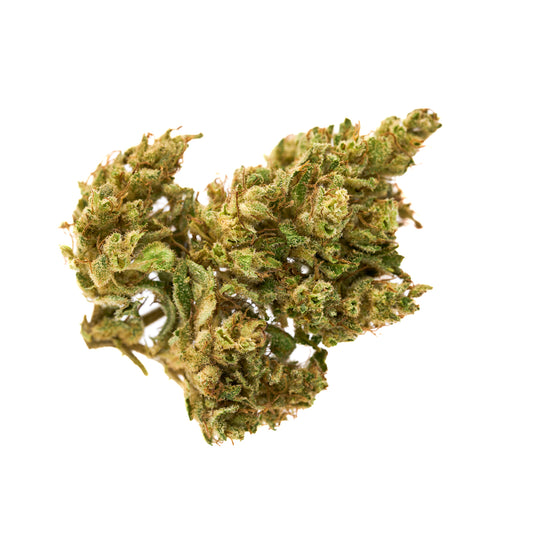
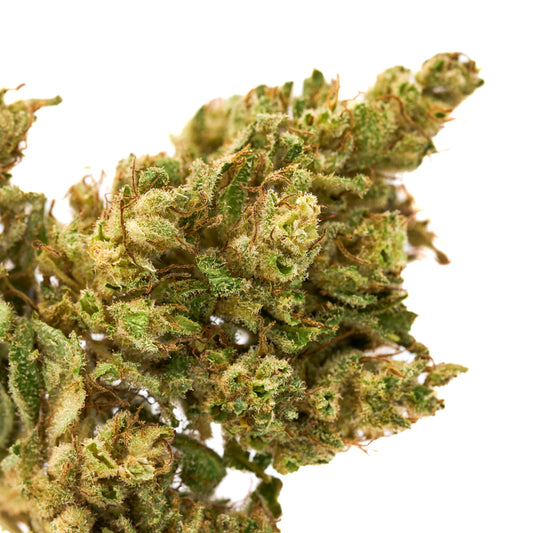
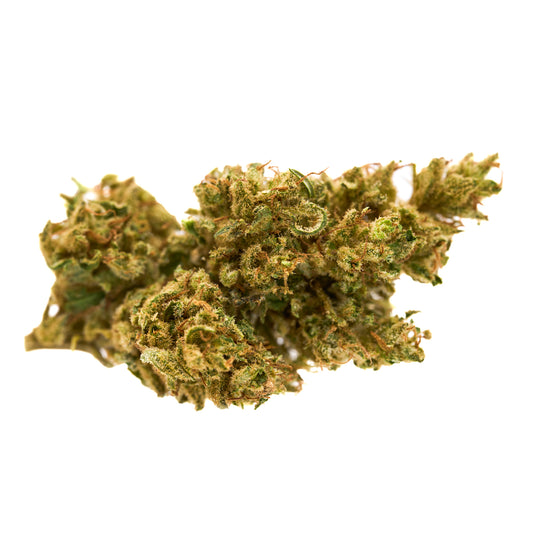

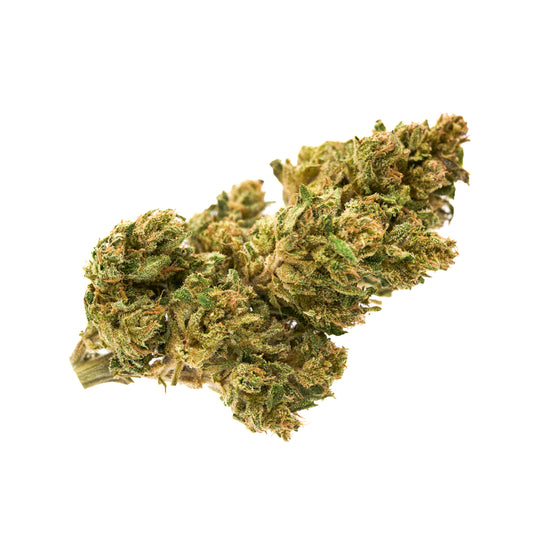




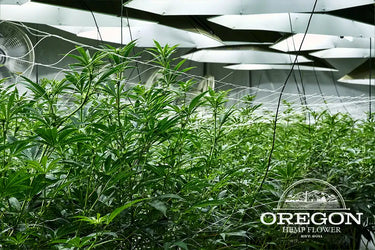

Leave a comment
Please note, comments need to be approved before they are published.